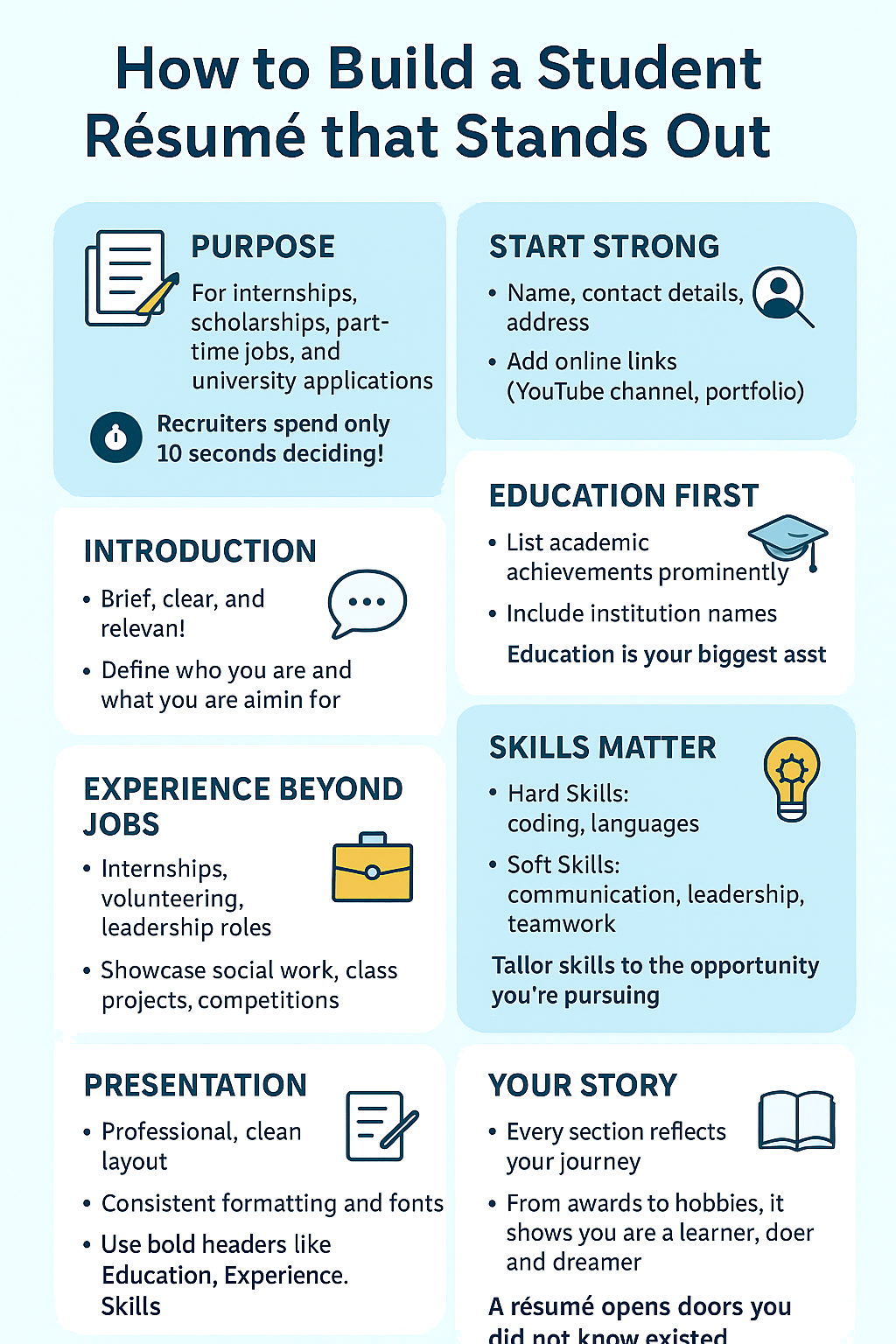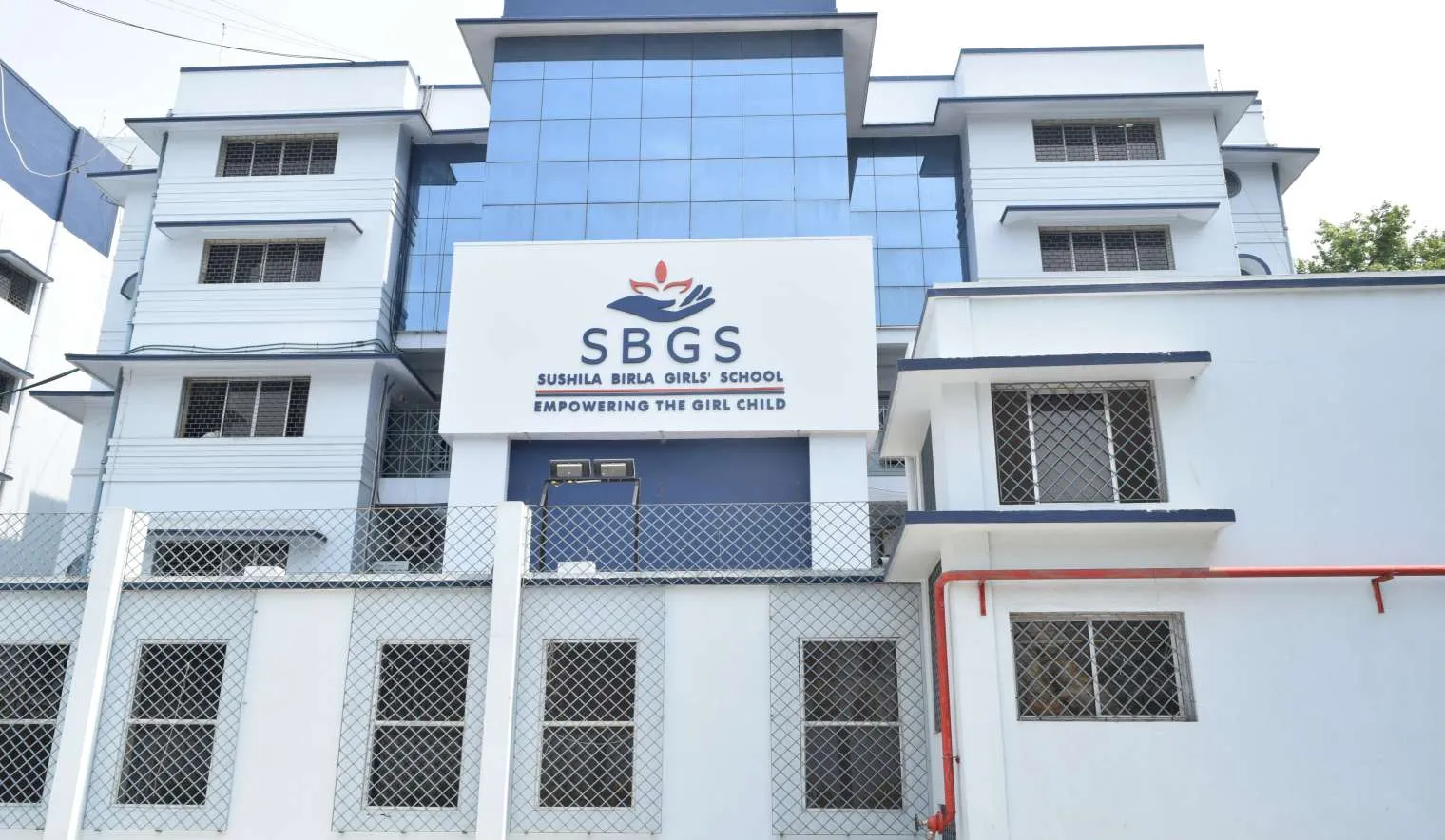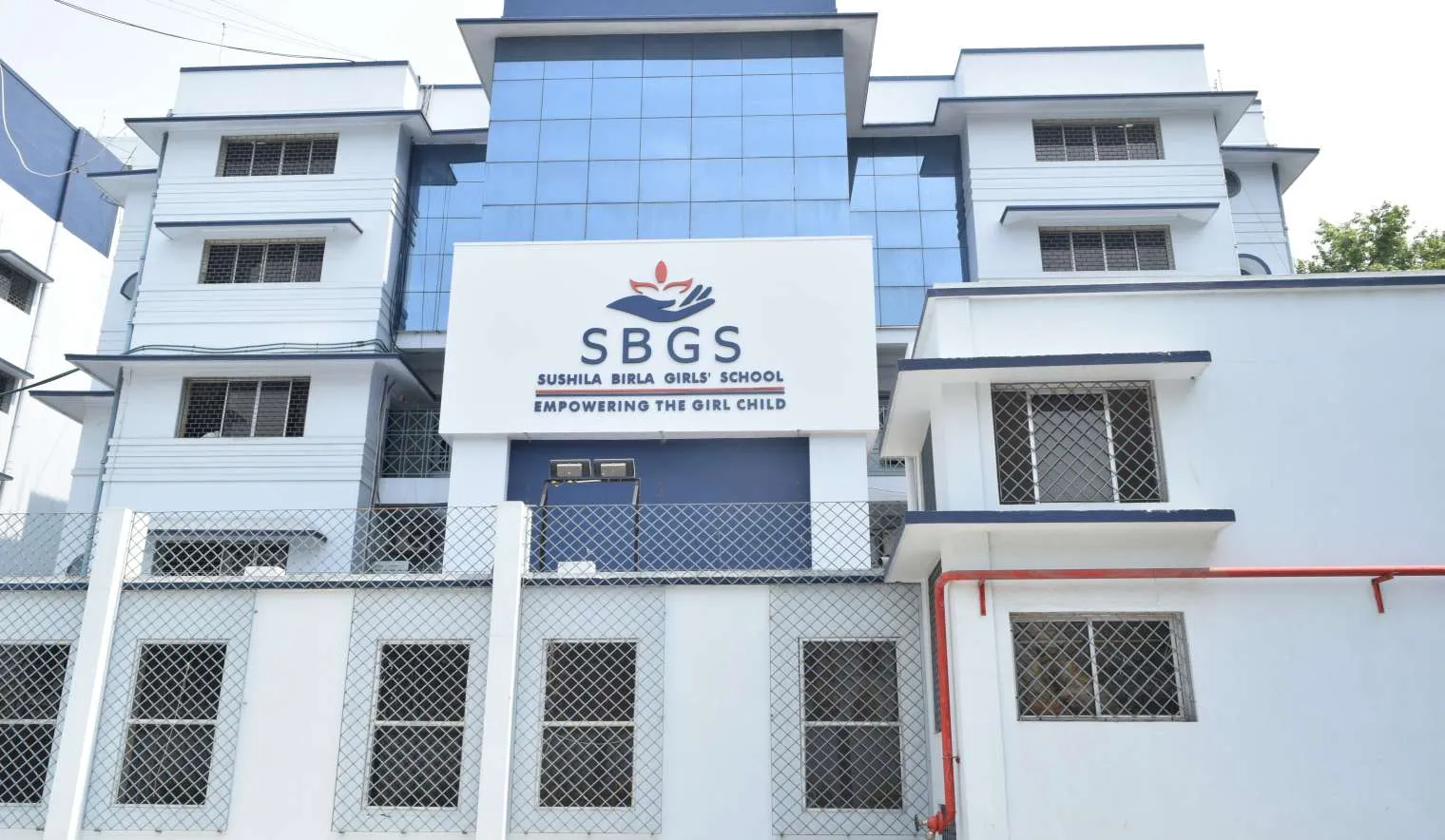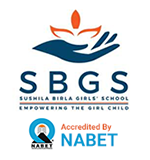How to Build a Student Résumé that Stands Out
- Category: Career
- Posted By: sbgs

A student may require a résumé for various purposes, such as applying for internships, universities, colleges, part-time jobs and scholarships. Most organisations need only ten seconds to realise if the résumé goes into the ‘accept’ pile or the ‘reject’ pile. Therefore, it is essential to build a résumé that truly stands out to be at the top of the accept pile. Needless to say, the first thing that should be mentioned in it is one’s educational qualification. Education is a student’s biggest asset. However, just listing down the academic achievements does not suffice. Nowadays, many organisations look for a more holistic development in students.
A résumé usually starts with the candidate’s name, contact information and address. Adding relevant online links, such as a YouTube channel, can further enhance its appeal. The opening lines should be brief and focused, providing a clear introduction and purpose. Following this, educational qualifications should be prominently presented, listing all academic accomplishments along with the names of the institutions where they were earned, wherever possible.
Experience in different fields is very important. This should contain experience in more than just traditional jobs. Social work is well-regarded by institutions. Internships, volunteer roles, leadership positions in student organisations, class projects and personal side projects can all demonstrate skills and initiative. For example, winning prizes by participating in inter-house fests or working in an NGO. Apart from experience, there should be a section that showcases the skills relevant to the opportunity being pursued. Hard skills are teachable abilities, while soft skills relate to interacting and working with others. Soft skills include leadership, communication and teamwork, whereas hard skills include coding and knowledge of multiple languages. Mentioning these in a résumé greatly improves its quality.
A résumé must have a professional and clean layout with different subheadings for each topic that is incorporated in it. For example, using bold text for section headers like Education, Experience and Skills, sticking to a clean font and consistent formatting. There are some résumé-building sites and applications that provide a ready-made format for a résumé and can be used. Putting together the résumé is a crucial step in its formation and cannot be overlooked. An untidy presentation will immediately remove the extra advantage that another person, competing for the opportunity, may have achieved.
A résumé is not just a piece of paper—it is the story of who you are becoming. Each section holds a part of your journey, from the first prize you won in school to the projects you completed in college, from the hours you gave to community work to the passion you poured into a personal hobby. It speaks when you cannot, telling recruiters that you are not just a student but a learner, a doer and a dreamer! A well-crafted résumé says: I have potential and I am ready to prove it.
A résumé is a person’s handshake before they enter the room—firm, confident and memorable. It should be built with care, polished with pride and crafted to open doors they may not even know exist because when opportunity knocks, the right résumé ensures it knocks for them.
"To succeed in your mission, you must have single-minded devotion to your goal." - Dr. APJ Abdul Kalam
Discover the Latest Happenings at Our School: Our Digital Bulletin Board





